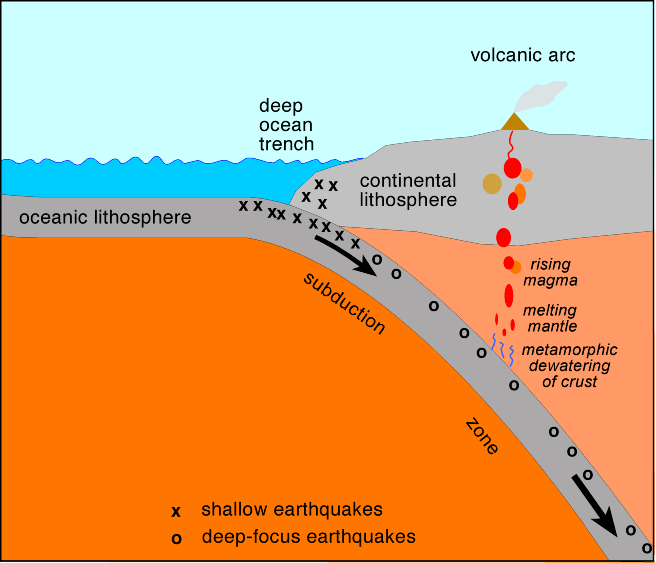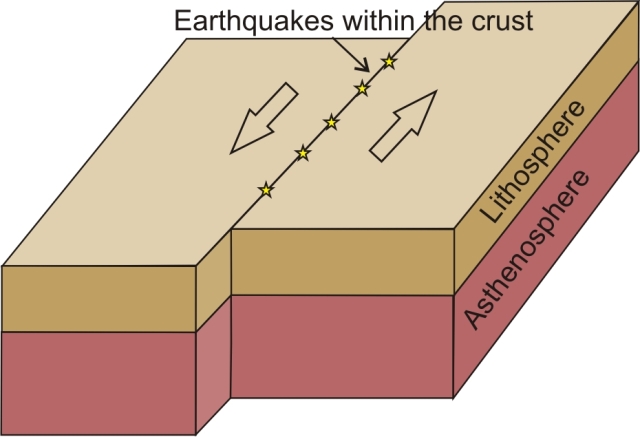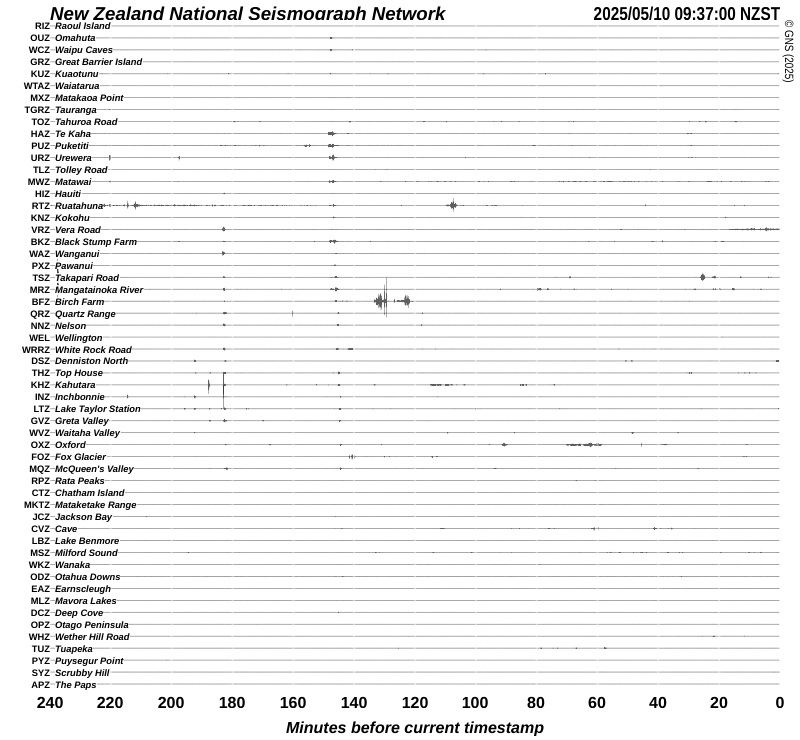Mahi Tuatahi (20min) 🔗
- Open Google Classroom
- Click on “Classwork”
- Open the Local Geology document
- Complete these questions using your notes from last class, and any internet research that you want to do.
Akoranga 20 Whāinga Ako 🔗
- Use plate tectonics to explain why and where earthquakes occur
Tectonic Plates & Fault Lines 🔗
- Tectonic plates are the major pieces of the crust that slowly move across Earth’s mantle
- These plates cannot slide smoothly past each other; instead they get stuck and build up pressure and energy
- This pressure and energy causes the crust to fracture at fault lines
- When the pressure and energy gets too high, the rock can slip and cause an Earthquake!

Akoranga 21 Mahi Tuatahi 🔗
Complete this paragraph in your book.
The energy ________ travels outwards as _____. The point in the Earth’s crust where this happens is called the _____, the point directly above the focus on the Earth’s surface is called the _________. Seismologists use ___________ to determine the magnitude and ________ of earthquakes.
Words: seismographs, focus, location, waves, epicentre, released
Akoranga 21 Whāinga Ako 🔗
- Use scientific language: epicenter, focus, p and s waves
- Be able to locate and measure earthquakes
Recall: Divergent Plate Boundaries 🔗
- New crust is created by cooling magma in the gap
- No earthquakes occur here
- Forms a mid-ocean ridge, or a rift valley on land
- Volcanoes occur in the gap

Recall: Convergent Plate Boundaries 🔗
- Oceanic crust is destroyed (melted in mantle)
- Earthquakes occur here deep in the oceanic trench
- Can form mountains and ocean trenches
- Volcanoes may occur near here

Recall: Transform (Conservative) Plate Boundaries 🔗
- No crust is created or destroyed
- Earthquakes occur near the surface here
- No mountains or trenches formed
- No volcanic activity

Earthquakes 🔗
- Occur on the surface of transform boundaries
- Occur deep underground at convergent boundaries
- Minor ones may occur due to volcanic activity
- Focus: The point underground where the tectonic plates slip
- Epicenter: The point on the surface directly above the focus
- Seismic Waves: Vibrations in the crust caused by the violet release of energy over a short period of time during an earthquake
Ngohe: Locating the Earthquake Epicenter 🔗
- Seismographs are placed in many locations around New Zealand and the rest of the world.
- They vibrate when earthquakes shake their housing.
- We can use three or more seismographs to triangulate the epicenter of the earthquake.
- Collect a worksheet from the front! Draw a circle of the correct radius around each location and find the earthquake epicenter!
Akoranga 22 Mahi Tuatahi 🔗
Seismic Waves 🔗
- Seismic waves come in two different types of vibration - they have slightly different properties which we need to know.
- Make two columns in your book with the headings P Waves and S Waves
- In the real world, earthquakes tend to be a mix of p and s waves which creates a more complex motion.
P Waves 🔗
- P for primary, because they travel the fastest and arrive first during an earthquake.
- Compression and extension in the direction of the wave.

S Waves 🔗
- S for secondary because they travel slower than p waves.
- Particles oscillate up and down 90deg to the direction of the wave.

Ngohe: Complete This Paragraph 🔗
When the _________ is too much in the crust, an _________ will occur. The point in the crust where it occurs is called the _________. The first ________ waves to reach the surface are the ________; the point they first appear at is called the ________. The next type of waves to arrive are the _________. They arrive second because they are _________ than the first waves. P-waves have a ________ and ________ pattern while S-waves have a ________ and _________ motion. In reality, earthquakes are a combination of both of these wave types.
Words: compression, secondary (s) waves, expansion, slower, earthquake, up, seismic, stress, primary (p) waves, down, epicenter, focus
Akoranga 23 Mahi Tuatahi 🔗
- Open the Weathering and Erosion on Banks Peninsula doc from last week on Google Classroom
- Review/complete Question 4
- Be ready to contribute to a class answer
O Whāinga Ako 🔗
- Use scientific language: Richter and Mercalli scale
- Describe the function of a seismograph
Richter Scale 🔗
- Developed for use around the San Adreas Fault
- Measures energy
- Is only very accurate for that locality
- Each number represents 31.6 times the energy of the previous number!
Mercalli Intensity Scale 🔗
- Measures the impact on humans and the land
- It is more useful in a variety of locations
- In reality, places like GeoNet use an average of different scales to generate a more accurate and representative magnitude number.
- E.g. the Christchurch Feb 11 quake


Ngohe: Assigning Magnitues to Historical NZ Earthquakes 🔗
- Collect a sheet from the front
- Glue it into your book
- Read the left hand side about the different levels of the Modified Mercalli Intensity Scale
- Work with the person next to your to decide what magnitude you would assign it using the MMI scale
Seismographs 🔗
- A seismograph is a device that vibrates as an earthquake passes through it
- This vibration is recorded as a series of peaks/troughs on a graph
- This graph can be used to calculate the maximum acceleration of the ground and therefore help determine the magnitude of the quake
- There are many (52) seismographs around New Zealand
- They are used to get many measurements for a more accurate magnitude value and to help locate the earthquake!